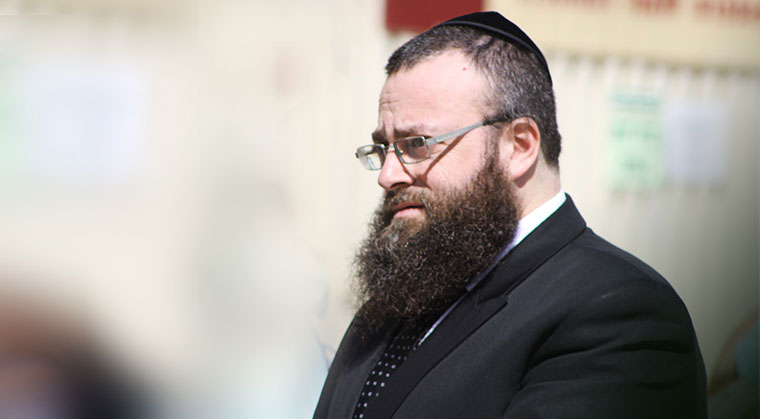Bearer of the Torch

His mark is felt in its every corner — and it’s not just his lomdus and diligence, but the intensity and strength of character that has led him along a challenging journey

His father is a professor at the Weizmann Institute, and he too began his path to Torah in a national-religious yeshivah. But there was no bochur more appropriate than Noam Yitzchak Alon when Rav Nosson Tzvi Finkel ztz”l was looking for a shidduch for his oldest daughter. Today Reb Noam, the beloved rosh yeshivah at the helm of Mir Brachfeld, continues to bear the torch of “the Shver”.
Photos: Shuki Lehrer Matisyahu Goldberg Baruch Ovitz
A s buses from around the country pulled up at 27 Rabi Akiva Street in Modiin Illit a stream of bochurim made their way into the dormitory building pulling their suitcases as they tried to maneuver with their various bags and packages — initial supplies for the long winter zeman ahead. But before entering the beis medrash each one of them made a preliminary stop: They went to greet their rosh yeshivah like children run to greet their father after a long separation.
Rav Noam Yitzchak Alon or Reb Noam as his talmidim call him is relatively new to the job — just 45 years old and already the senior rosh yeshivah in Mir-Brachfeld. The first three years here were spent working hand in hand alongside Rav Aryeh Finkel ztz”l but in the year and a half since Rav Aryeh’s passing Reb Noam has become the official rosh yeshivah. During this short time he’s proven an original and creative leader as he continues to build this Torah empire.
His mark is felt in its every corner — and it’s not just his lomdus and diligence, but the intensity and strength of character that has led him along a challenging journey.
A child of academic Rechovot, young Noam Alon discovered the yeshivah world, breaking in with persistence and drive. His passage has been one long testimony to the truth of the Vilna Gaon’s maxim that “akshan yatzliach,” the tenacious one will succeed.
That willpower has certainly manifested itself in his intense learning schedule, inspired by his father-in-law and the yeshivah’s founder, Rav Nosson Tzvi Finkel ztz”l.
Oops! We could not locate your form.












